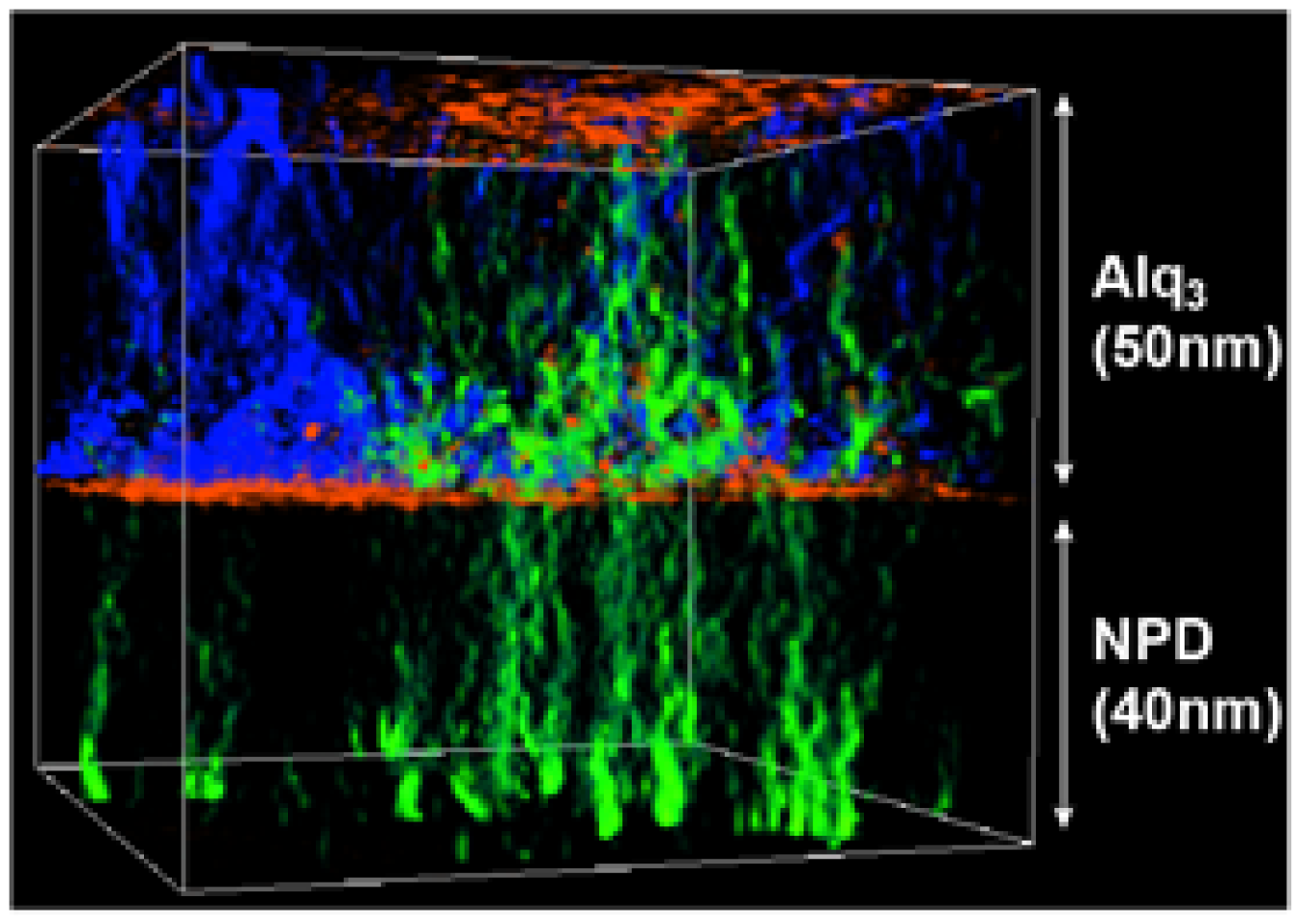
Simulation showing the highly filamentary nature of the electron (blue) and hole (green) current density in a bilayer OLED.
Although the conversion of electrical current to photons is very efficient in OLED lighting panels, extracting the light remains a major challenge. The basic problem arises from the high refractive index of the layers in which the photons are created. Most of the photons are reflected before they can escape into air, which has a much lower refractive index. With the help of DOE funding, researchers at Penn State University have developed an innovative way to reduce the refractive index of the emitting layers of OLEDs.
With OLEDs, the notion that diluting an organic semiconductor in an insulating host matrix can improve its electrical transport offers the potential to modify physical properties of the blend film (such as refractive index or glass transition temperature) without having to re-engineer the organic semiconductor itself. The researchers have demonstrated a way to improve OLED performance by developing electrically inert, low-cost dilution molecules that can be co-evaporated in the existing hole and electron transport layers of a commercial multi-stack OLED, to lower the refractive index and enable high outcoupling efficiency without degrading baseline device electrical performance or increasing manufacturing cost.
First, the researchers modeled the optics of multi-stack OLEDs, to understand how to optimally exploit low-index transport layers for maximum light extraction into the substrate. A series of electrically inert dilution molecules is being screened computationally and synthesized to decrease the refractive index of hole and electron transport materials, without adversely affecting their charge-carrier mobility. Initially, the team plans to validate a path to very high internal light-extraction efficiency through simulation and experimentally demonstrate a diluted hole transport material that simultaneously achieves low refractive index with no degradation in hole mobility.
Once this demonstration has been accomplished, the researchers will investigate dilution molecules for electron transport materials and will characterize changes in refractive index, electron mobility, and morphological stability. Diluted electron and hole transport layers will be implemented in commercial multi-stack OLED panels, and their outcoupling efficiency, electrical performance, and long-term reliability will be evaluated relative to undiluted controls. Ultimately, the team aims to demonstrate multi-stack OLEDs with internal light extraction efficiency exceeding 75%, which will be a major step toward improving the performance of OLED lighting in a scalable and cost-effective way. (September 2020)
Return to Research Highlights.

